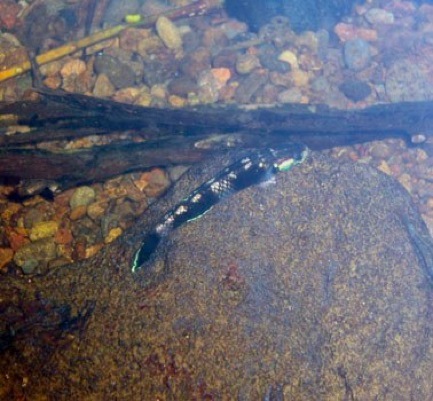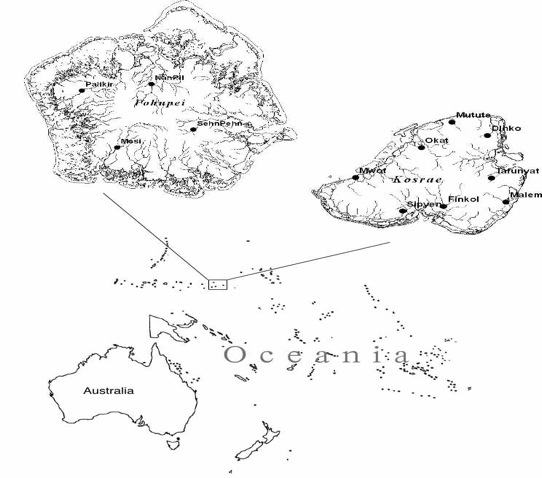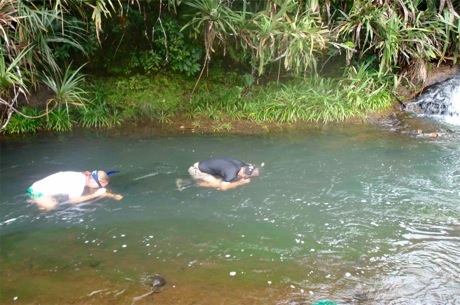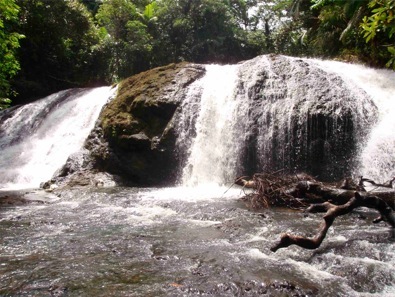Current Research

Currently I am investigating the effect of an amphidromous life-history strategy on the persistence of metapopulations of tropical freshwater gobies. Amphidromy refers to a type of diadromy where juveniles and adults live and breed in freshwater while the larval stage is completed in marine waters. Amphidromous species often exist in metapopulations that are comprised of semi-isolated adult sub-populations (streams) that only achieve connectivity via larval dispersal in marine waters and the subsequent post-larval recruitment back to fresh water. This pelagic larval stage lasts on average from 65 to 266 days for sicydiine gobies depending on the species.
Specifically, my research is focused on the dispersal capability of the larvae of two Sicydiine gobies (Stiphodon pelewensis and Stiphodon caeruleus) while in marine waters around the island of Pohnpei, Micronesia. S. caeruleus is endemic to Micronesia, having only been reported from the islands of Pohnpei and Kosrae. S. cf. elegans exhibits a more widespread distribution, putatively ranging throughout much of Oceania. These reported distributions are in contrast to their mean pelagic larval duration (PLD), which is longer for S. caeruleus (88.6 days) than for S. pelewensis (65.8 days)

A waterfall on the Ngardmar River,
Palau 2009
An adult river goby (Stiphodon pelewensis) in the Senipehn River, Ponape, Micronesia - 2009
Using small specialized spears, Joe Hall and Sunny Brenneman snorkel a river in Palau to collect goby specimens - 2009





